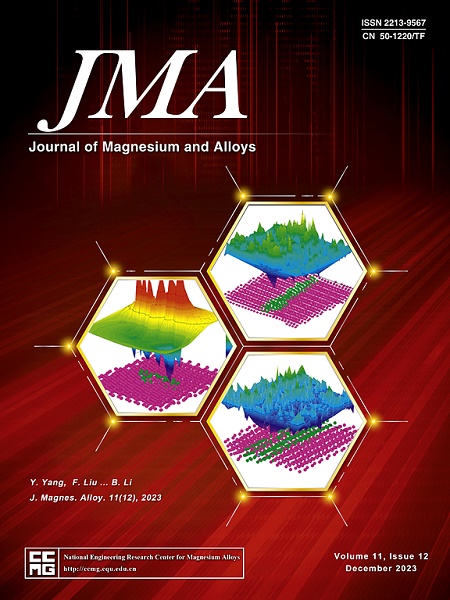Catalytic effect of carbon-supported NiCoFeCuMg high-entropy alloy nanocatalysts on hydrogen storage properties of MgH2
IF 15.8
1区 材料科学
Q1 METALLURGY & METALLURGICAL ENGINEERING
引用次数: 0
Abstract
High entropy alloy (HEA) based materials have been extensively investigated as viable catalysts in hydrogen storage for their unique properties. Herein, we demonstrate a relatively mild synthesis strategy for constructing carbon-supported by NiCoFeCuMg HEA (NiCoFeCuMg@C) nanocatalysts by utilizing polymetallic metal-organic frameworks (MOFs) as precursors. The incorporation of prepared catalysts into MgH2 greatly improved the hydrogen storage performance: the MgH2+NiCoFeCuMg@C composite can rapidly desorb 6.01 wt% H2 at 325 °C, and the initial dehydrogenation temperature decreased to 167.2 °C, nearly 163.8 °C lower than that of the pure MgH2. Besides, the composite exhibits a fairly stable reversible capacity with 97% capacity retention after 20 cycles. Most importantly, ex-situ structural characterization reveals that the synergistic effects of the “hydrogen pump” role of Mg2Ni(Cu)/Mg2Ni(Cu)H4 and “hydrogen gateway” role of Co3Fe7, as well as the excellent dispersion function of carbon material, contribute to the outstanding hydrogen storage properties of the MgH2+NiCoFeCuMg@C composite. This study provides valuable insights into the performance improvement of carbon-supported HEA catalysts in modification of MgH2.

碳支撑镍钴铁铜镁高熵合金纳米催化剂对 MgH2 储氢性能的催化效应
本文章由计算机程序翻译,如有差异,请以英文原文为准。
求助全文
约1分钟内获得全文
求助全文
来源期刊

Journal of Magnesium and Alloys
Engineering-Mechanics of Materials
CiteScore
20.20
自引率
14.80%
发文量
52
审稿时长
59 days
期刊介绍:
The Journal of Magnesium and Alloys serves as a global platform for both theoretical and experimental studies in magnesium science and engineering. It welcomes submissions investigating various scientific and engineering factors impacting the metallurgy, processing, microstructure, properties, and applications of magnesium and alloys. The journal covers all aspects of magnesium and alloy research, including raw materials, alloy casting, extrusion and deformation, corrosion and surface treatment, joining and machining, simulation and modeling, microstructure evolution and mechanical properties, new alloy development, magnesium-based composites, bio-materials and energy materials, applications, and recycling.
文献相关原料
公司名称
产品信息
阿拉丁
2,5-dihydroxyterephthalic acid (DHTA)
阿拉丁
Copper nitrate trihydrate (Cu(NO3)2·3H2O)
阿拉丁
Iron nitrate nonahydrate (Fe(NO3)3·9H2O)
阿拉丁
Nickel nitrate hexahydrate (Ni(NO3)2·6H2O)
 求助内容:
求助内容: 应助结果提醒方式:
应助结果提醒方式:


